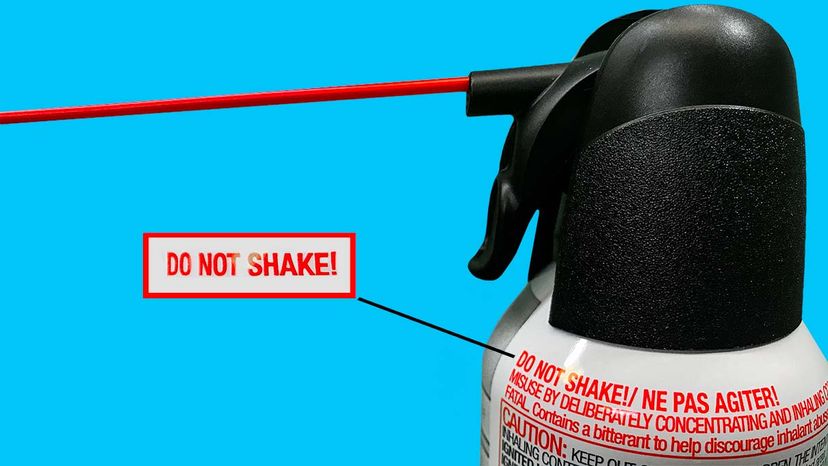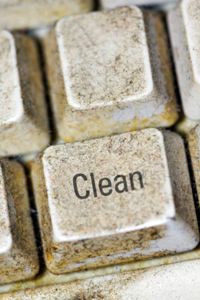
Key Takeaways
- Compressed air canisters contain compressed, liquefied gas (like difluoroethane or tetrafluoroethane), not actual air, and shaking them can be dangerous because it might result in propelling liquid instead of vapor.
- Shaking or tilting the canister may cause the liquid to contact the skin or eyes, potentially causing frostbite due to the chemical's ability to freeze skin on contact.
- Unlike other aerosol products that need shaking to mix the contents with the propellant, shaking compressed air canisters is not recommended and can lead to improper use and injuries.
Whether it's dry shampoo or paint, we're accustomed to shaking aerosol canisters before we spray them. So it's only natural that when we pick up a canister of compressed air to clean a keyboard, we also shake the can — even if its label clearly says, "DO NOT SHAKE."
But is this force of habit harmful? In a word, yes.
Advertisement
Compressed air canisters are not really canned air. Rather, these canisters contain a compressed, liquefied gas that propels its own vapors through a nozzle. Most of the time, the liquefied gas is one of two types. One is difluoroethane or 152a, which is found in canisters marketed for computers and electronic equipment, and incidentally, also is known as Freon — the same gas that makes refrigerators and car air conditioners cool. The other type of gas is tetrafluoroethane or 134a, which is recommended for use when flammability is an issue, such as with hot surfaces or spark-producing equipment. However, some types of canned air may also contain butane, the same liquefied gas found in cigarette lighters.
According to 3M, which manufactures and sells compressed air canisters for dust removal, shaking or tilting the can may result in propelled liquid instead of vapor. If this happens, the liquid may come into contact with skin or eyes, warns 3M, and cause frostbite because the chemical will freeze skin. If this happens, medical attention may be warranted, but in the meantime, 3M recommends washing affected areas of skin with soap and water or flushing eyes with copious amounts of water.
And what about all those other aerosol canisters that recommend shaking before use? Unlike the liquefied gas in canned air that propels itself out the nozzle, everything from dry shampoo to spray paint requires a little mixing. The product inside the can separates into layers and must be shaken to mix with the propellant before use, otherwise only the propellant will come out.
Advertisement

